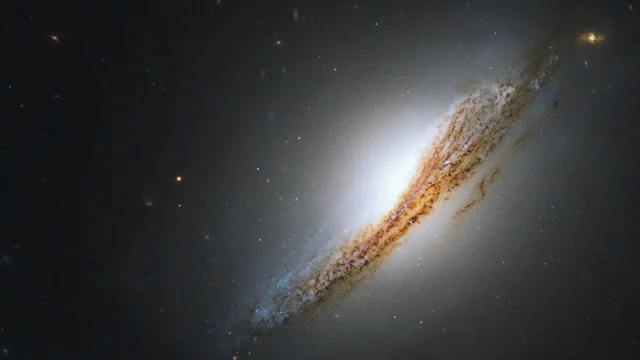“Unlocking the Mystery of Pulsar PSR J1023+0038: From Bright Highs to Dim Lows”
Pulsars, often dubbed as the “undead” remnants of massive stars, continue to astonish with their enigmatic behavior. These rapidly rotating stellar corpses emit beams of electromagnetic radiation from their magnetic poles, creating the appearance of regular flashes when observed from Earth.
Enter PSR J1023+0038, a pulsar in a league of its own. Unlike its pulsar counterparts, PSR J1023 is part of a close binary system, orbiting another star. What sets it apart is its tendency to transition between intensely bright “high mode” and dimmer “low mode” as it interacts with its companion star. This behavior had long puzzled astronomers, but a breakthrough has finally shed light on the mysterious shifts and erratic pulsations of this celestial zombie.
Extreme Highs…
PSR J1023 isn’t your typical pulsar; it’s a millisecond pulsar, spinning hundreds of times per second. Researchers had suspected that millisecond pulsars gain their incredible speed from their binary companions. These pulsars strip material from their partners, drawing it in to continually energize the neutron star.
This particular pulsar, PSR J1023, was identified as a transitional millisecond pulsar due to its oscillation between states of high and low luminosity. The question remained: what triggers these oscillations?
The answer lies in the material that PSR J1023 siphons from its companion star, forming an accretion disk around the pulsar. This disk contains highly charged particles and is gradually pulled toward the pulsar by its gravitational pull. Occasionally, an influx of a substantial amount of material occurs, spiraling closer to the pulsar. During this process, charged particles from the companion star collide with those in the pulsar’s powerful winds, heating up the material and propelling it outward.
At times, the pulsar also experiences flares, which simultaneously eject plasma into space. During high mode, this results in an explosive display of X-rays, ultraviolet, and visible light emissions.
…And Low Lows
After expelling significant material during high mode, the pulsar’s emissions of X-rays, UV, and visible light plummet. The pulsar’s wind weakens as it receives less material to sustain it. Although the weakened wind continues to interact with the accretion disk and some material from the companion star, it pales in comparison to the high mode’s dramatic emissions.
Even the compact jet responsible for the pulsar’s pulsations briefly ceases after high mode concludes. This is due to the synchrotron emissions generated when pulsar winds collide with material closest to the pulsar. Once this material is ejected into space, the wind’s shock encounters material too distant to fuel the jet for a while.
Nevertheless, the dimmer pulsar continues to emit radio waves, primarily through the compact jet, which sporadically releases remnants from the high mode. During low mode, these remnants are visible alongside the typical visible light and X-ray emissions.
Predictably, low mode is not permanent. The cycle renews when fresh material from the disk approaches the star, filling the voids left by previously ejected plasma. This influx reignites the synchrotron emission that powers the compact jet, propelling the pulsar back into high mode.
Keeping a Finger on the Pulse
Unraveling the mystery behind PSR J1023’s mode switches required the collaborative effort of 12 ground-based and space telescopes, including ALMA, ESO’s New Technology telescope, ESO’s Very Large Telescope, and ESA’s XMM-Newton X-ray telescope. This extensive multi-wavelength study provided critical insights into how inflowing material impacts the pulsar’s winds and pulsations—details previously elusive to astronomers.
However, more mysteries await exploration. The researchers aim to uncover potential parallels between transitional millisecond pulsars and black holes, both of which exhibit intriguing phenomenological properties. This quest may deepen our understanding of accretion physics in compact celestial objects and uncover more cosmic surprises.
In the grand cosmic theater, pulsars and black holes share the stage, showcasing the wonders and oddities of the universe—fortunately, neither harbors a taste for human brains.
Disclaimer: The views, suggestions, and opinions expressed here are the sole responsibility of the experts. No Dive Digest journalist was involved in the writing and production of this article.

